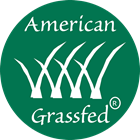The U.S. Department of Agriculture’s (USDA) Agricultural Marketing Service (AMS) has launched an online resource that makes it easier than ever for small and mid-sized producers to find markets for their products.
With the new
Food Hub Web page, producers, buyers, and others can now access a central clearinghouse for resources, news and information related to food hubs and similar enterprises that provide infrastructure support for small and mid-size producers. Contents of the Web page will continue to evolve as USDA expands its understanding of the unique food hub business model, which pairs producers with buyers to serve local and regional food systems. Ultimately such enterprises support local economies and create jobs by offering services that enable farmers to break into new, higher-volume markets and preserving product identity.
“We know that farmers, especially small and mid-sized producers, often have big challenges when it comes to getting their products efficiently off the farm and into the marketplace,” said Rayne Pegg, AMS administrator. “But we also know they don’t have a lot of time to search the Internet for solutions. The
Food Hub Web page is a good place to start. It is equally useful to entrepreneurs, advocates, researchers and others who want to strengthen regional food systems and local economies.”
The Web page features information from numerous USDA agencies and other leading research and practitioner organizations in the public, non-profit and private sectors. A comprehensive, evolving directory of identified food hubs and financial resources will allow users to find desired markets quickly, without spending hours collecting information from various locales. USDA is preparing a more comprehensive resource guide for food hubs and similar enterprises for release later this year. Additionally, visitors will be able to access USDA-generated research and presentations on food hubs and similar enterprises and relevant research from non-profit organizations, universities and industry experts.
USDA’s work is part of the National Food Hub Collaboration, a partnership among USDA, the Wallace Center at Winrock International, National Good Food Network, National Association of Produce Market Managers, and Project for Public Spaces. The Collaboration collects and analyzes the latest data, research and activities related to food hubs and works to ensure the success of existing and emerging food hubs in the United States. More information is available at
www.ams.usda.gov/foodhubs.


 Yvonne Maffei prepares food for the start of Ramadan, in her Des Plaines home July 25. (Stacey Wescott/ Chicago Tribune)
Yvonne Maffei prepares food for the start of Ramadan, in her Des Plaines home July 25. (Stacey Wescott/ Chicago Tribune)